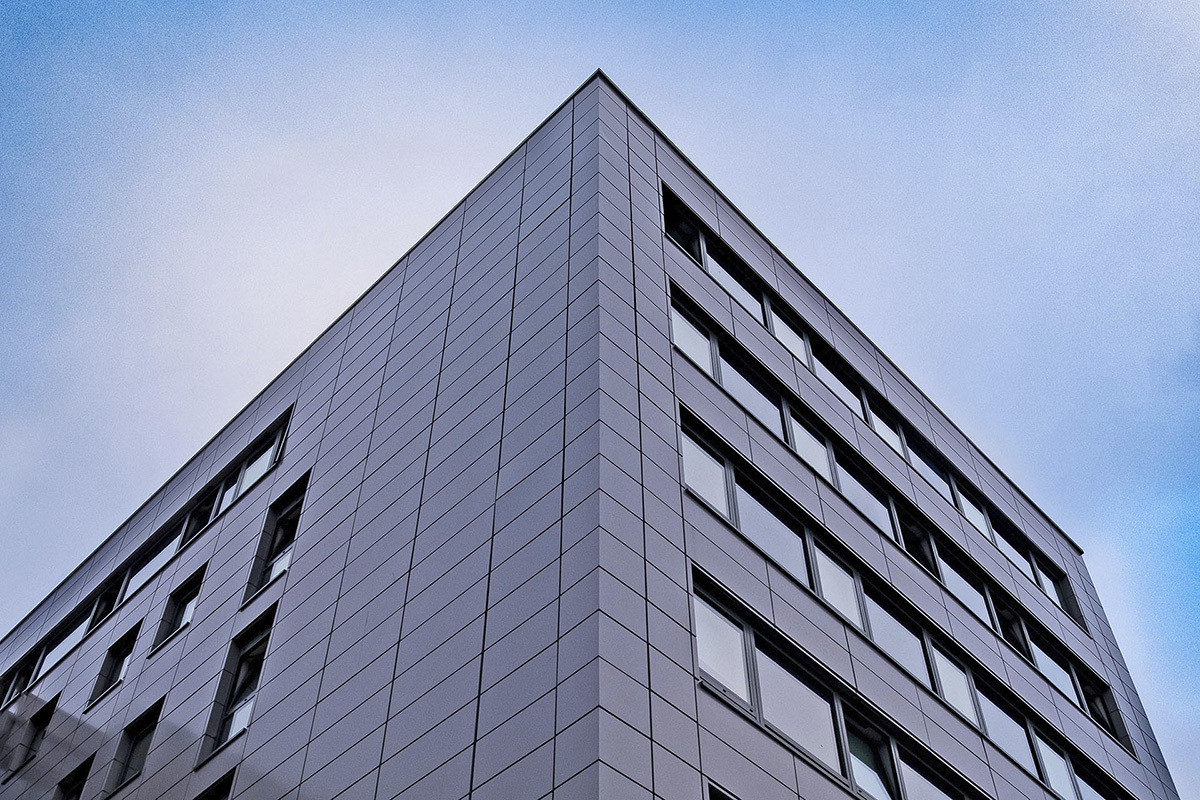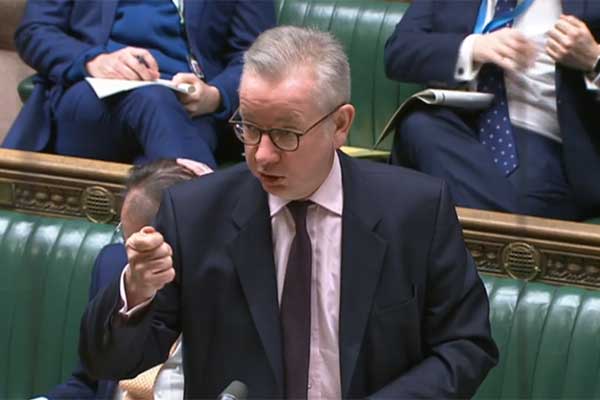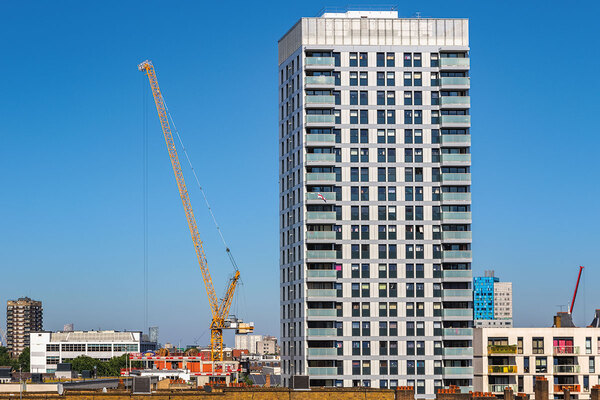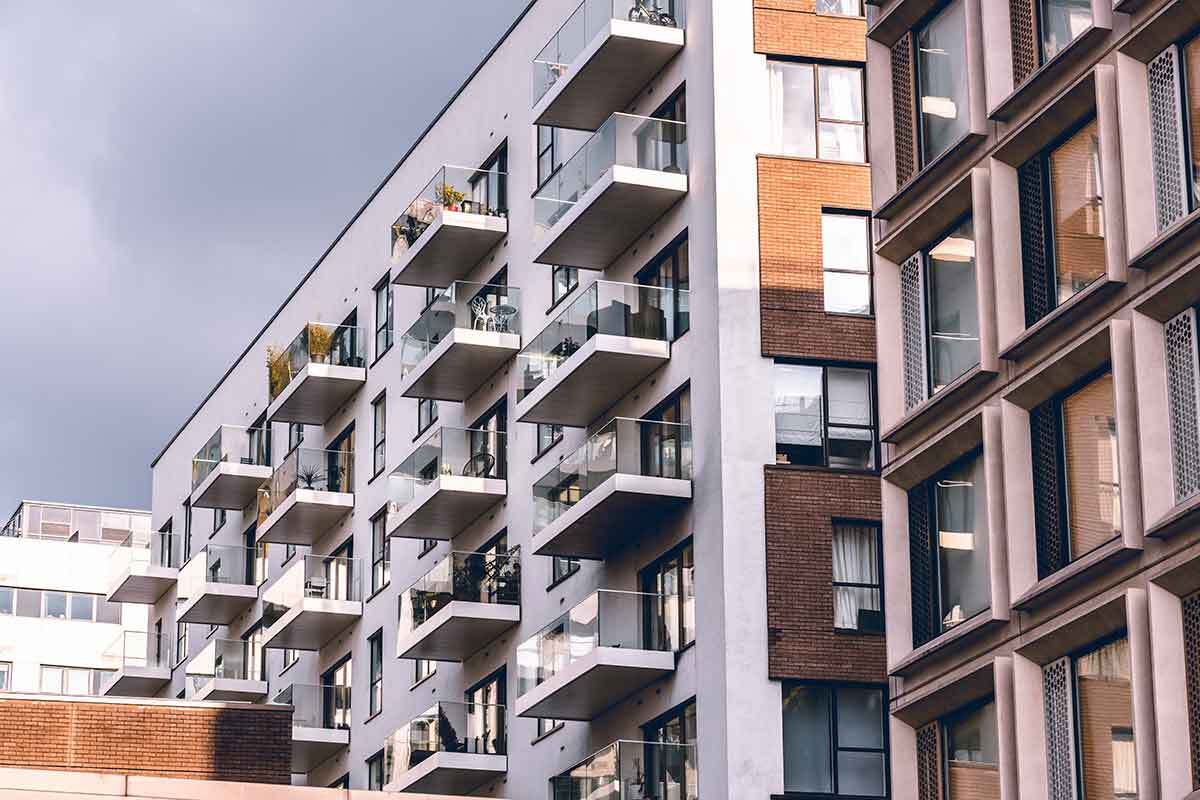You are viewing 1 of your 1 free articles
The story explained: what does the new plan to protect leaseholders from huge building safety costs involve?
An ambitious new plan to solve the building safety crisis has been outlined by government, with leaseholders protected from huge bills and developers and cladding manufacturers set to be forced to cough up. Peter Apps looks through the detail
What do the new protections for leaseholders provide?
The new amendments will prohibit leaseholders in blocks above 11 metres tall from being charged any money for cladding remediation work.
For non-cladding work, the new law will seek to make developers and cladding manufacturers pay. It will then move on to freeholders, where they have the means to do so.
If neither of these routes provide the full sum of money required to fix the block, leaseholders can be billed. But these costs will be capped at £10,000 nationally and £15,000 in London.
How will the caps work?
The caps are modelled on an existing rule known as Florrie’s Law, which limits the amount social landlords can charge for major works by the same caps.
They also allow the bills to be spread over five years, so outside London leaseholders would be paying £2,000 a year, or £166 a month, if they are billed the full amount.
Further protection is available for shared owners: the caps will be reduced by the percentage of the property they own. So a 25% share in London would result in a cap of £3,750 – or £62.50 a month over five years.
The standard caps also rise for more valuable properties. A £1m flat will be capped at £50,000 and a £2m property will be capped at £100,000.
Buy-to-let landlords who own one additional property will benefit from the cap, but those who own more will not.
A big weakness in the Florrie’s Law protection has also been addressed - the charge can only be applied once. So when the limit is reached that’s it, no more money can be recouped from leaseholders for building safety work.
It will also include sums already paid, including for waking watches. So for those who have already spent thousands, it will count towards their eventual cap.
So who will pay?
The cladding removal costs will be funded for buildings taller than 18 metres by the taxpayer through the existing £5bn put into the Building Safety Fund.
For 11 to 18-metre buildings, a new £4bn scheme will be created with money the government plans to raise from the housebuilding industry (more on that later).
The government has not done an exhaustive exercise to calculate whether this will be enough, but it is confident based on sampling work that it will prove sufficient.
But what about non-cladding costs? This is the big question.
The government believes it can get to the original developer in around 40% of properties, because they are still owned by a company linked to the original firm. But this involves unpicking complex legal structures and is bound to be a difficult process.
It will then require freeholders who have the resources to pay to cover the costs in full. This is a direct reference to large pension and insurance funds that own portfolios of property and have so far largely declined to pay.
What about the rest? Where a freeholder or developer cannot be found, or where the freeholder is a social landlord who did not build the block, the caps apply. But what about the balance?
There are buildings where the non-cladding works reach £100,000 per flat, so the cap leaves a huge balance unpaid. Without someone to cover it, the works will not go ahead.
The government’s hope is that without leaseholders to bill, some unnecessary work will be abandoned. It believes that its new guidance will encourage a “proportionate” approach that uses sprinklers and fire alarms instead of full-scale remediation work.
But this may not work as well as it hopes – the new guidance could still result in huge demands for remediation work, with flats unsellable until it is complete.
Ministers hope to raise a substantial sum of money to solve this problem from cladding and insulation manufacturers – including through cost contribution orders for any firm convicted of an offence, and a new law that will allow residents to sue them under powers similar to the Defective Premises Act.
But all of this represents something of a gamble. For blocks where the funds simply cannot be raised, it is unclear what will happen. And no one, including the government, really yet knows how many buildings that will be.
What about social landlords?
Housing associations and councils will be expected to cover in full the costs of non-cladding works for blocks they built.
For those they own but did not build, they can bill leaseholders up to the capped amount but must cover the remaining costs themselves, or find another party to pursue for compensation.
That represents a potentially vast bill for the sector, which already faces huge cost pressures for net zero and general maintenance of the country’s ageing social housing stock.
There are also potential implications for the valuation of social housing properties, which is calculated according to the cost of necessary works. This could have knock-on implications with lenders.
Social landlords will, however, be able to apply to the medium-rise cladding fund to alleviate some of the cost of cladding works.
They will also not be responsible for flats they have purchased through Section 106 agreements, with the law attaching responsibility to the private developer. And in joint venture agreements, it will also be the private sector partner that is pursued.
But this is still a very large bill for the sector. It must be remembered that the money social landlords spend on these homes is not conjured from the ether. It comes from the rents paid by their tenants – effectively passing a large part of the bill for the crisis to some of the country’s poorest households.
How will the government get £4bn out of the builders?
A fairly hopeless-looking negotiation for the government has been tipped in their favour. I wrote last month that they were entering a gun fight holding a pistol loaded with blanks. Well, this legislation upgrades it to a rocket launcher.
Builders that do not stump up face the hefty sanction of losing the ability to receive planning permission or building control sign-off for their projects.
This would essentially shut down their business and is an extraordinary power grab from the state, and one that would have seemed unthinkable a few years ago. It also comes on top of the law that will make them responsible for paying costs in properties they built, which effectively rewrites the leases that residents have signed.
It remains to be seen how the industry will push back, but it may find that there is little it can do. An Act of Parliament remains a decisive instrument in the UK legal system.
The bizarre sight of UK house builders taking the government to Strasbourg and claiming that their human rights have been infringed is distinctly possible.
What about residents of buildings below 11 metres tall?
There is no protection from costs in low-rise homes, which will be a bitter blow to those affected.
The government is confident that new guidance will mean there is little or no call for remediation at these heights, but that is a gamble.
The new guidance provides no hard threshold on height and it is very difficult to see how a competent assessor could recommend leaving, for example, the violently combustible cladding used on Grenfell Tower on the walls of an 11-metre tall block. Even if that is the only example of remediation, it is still thousands of buildings and (probably) hundreds of thousands of residents.
Expect further battles over this point in the years to come.
When does this take effect?
The bill will not be in force until summer at the earliest. But it is likely there will be some form of ‘anti-forestalling’ to provide the protection immediately. It is not yet clear how this will work.
It also leaves a very open question for the cost of interim measures (waking watch). Many leaseholders will be at or close to their cap for these costs already. Once they can no longer be charged, who pays?
Without some form of protection, the building risks being evacuated by the fire service. There is funding to replace waking watches with fire alarms, but this is not sufficient for the thousands of blocks around the country reliant on these measures.
What about residents who have already paid?
When the government announced funding to pay for a variety of cladding materials, rather than just aluminium composite material, in 2020, a group of leaseholders from the Skyline building in Salford hoped they may get a rebate.
They had already signed up for loans of up to £27,000 to cover the cost of the building work, on the belief that no government funding was coming and under duress from their freeholder.
They did not – finding themselves locked out by the terms of the scheme, which excluded works that had already begun. Documents disclosed later showed this was not an accident; the government knew that this exclusion would be “punitive”, but did it anyway.
The Skyline rule applies to this new announcement as well. Those who have already paid out will not be compensated, although they may have new routes for litigation against, for example, product manufacturers.
If the invoice has been received but not yet paid, they are covered by protection.
Sign up for our fire safety newsletter
Already have an account? Click here to manage your newsletters












